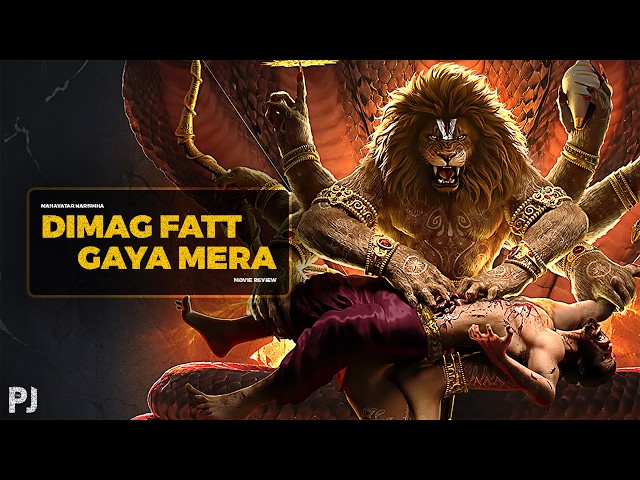
### Mahavatar Narasimha: A Spectacular Leap for Indian Animation
**Introduction**
Mahavatar Narasimha isn’t just another animated film—it’s a bold, ambitious entry into India’s animation landscape. This Hindi-language epic kicks off a cinematic universe centered around the avatars of Lord Vishnu, and it does so with a level of intensity and creativity that leaves a lasting impression.
**Storyline Summary**
The film retells the classic tale of Prahlad, Hiranyakashipu, and the emergence of Lord Narasimha. For those familiar with the Vishnu Purana, this narrative will hit nostalgic notes, especially the violent and memorable episodes from childhood. The plot meticulously builds the mythology, giving shape to well-known stories while amplifying their drama and scale. The narrative doesn’t hold back, diving headfirst into hyper-stylized action and grand visuals that span multiple realms, almost like a journey through a multiverse.
**Performances & Direction**
While this is an animated feature, the character designs and their personalities are maxed out to leave an impact. Each character—whether it’s the menacing Hiranyakashipu or the divine Narasimha—is crafted with meticulous detail. The director’s vision is clear: go all-in on style, scale, and spectacle. The intensity never dips, and even in moments of prayer or vulnerability, the details—like Hiranyakashipu’s weakened physique in his final moments—add depth to the storytelling. The climactic arrival of Narasimha is a visual and emotional high point, executed with raw power.
**Music & Technical Aspects**
The animation, though created on a limited budget, delivers a memorable experience. The aesthetic borrows from global influences—think *Attack on Titan*, *Star Wars*, and even *Thanos’ portals*—but blends them into a distinct visual language. There are moments, like the Lego-like ship design, that feel playful, but the overall execution is serious about its goals. The action sequences are relentless, brutal, and imaginative, rivaling even video game-level intensity. However, some technical aspects, like stiff hair movements and occasional stiffness in character motions, remind viewers of the constraints the team worked within. These are areas where future installments—like the upcoming Parshuram movie—could refine and improve.
**Conclusion**
Mahavatar Narasimha is a groundbreaking step for Indian animation. It’s not perfect—some pacing issues, hyper-maximalist approach, and technical limitations hold it back from being a masterpiece. But it’s thrilling, bold, and unapologetically intense. If you’re looking for an animated experience that doesn’t play safe, this is it. Watch Mahavatar Narasimha on the big screen, support ambitious Indian animation, and let’s hope the makers listen to feedback and come back even stronger. Share your thoughts in the comments—did this film impress you as much as it impressed me?




